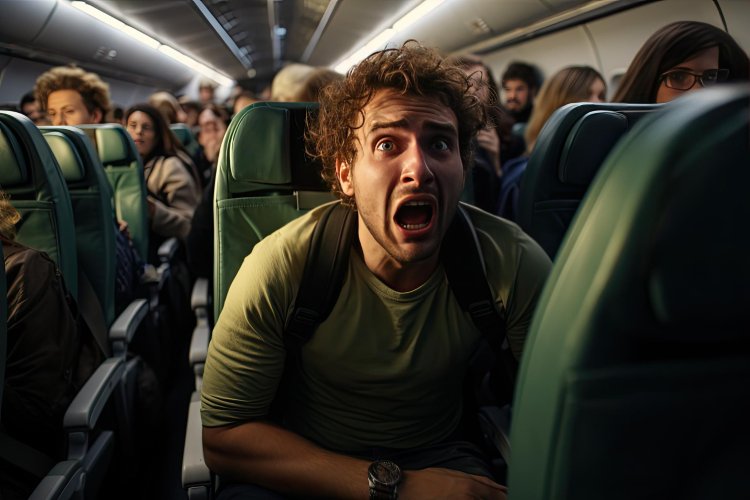Facing the Fear: Causes, Symptoms, and Treatment of Claustrophobia
Claustrophobia is an anxiety disorder characterized by an irrational and intense fear of confined or enclosed spaces. Individuals with this condition may experience severe anxiety or panic attacks when they find themselves in situations such as small rooms, elevators, tunnels, or even crowded places. This phobia can significantly impact daily life, leading to avoidance behaviors that restrict a person's activities and freedom.

Claustrophobia: Causes, Symptoms, and Treatment
What is Claustrophobia?
Claustrophobia is a common anxiety disorder characterized by an intense fear of enclosed spaces. People with claustrophobia experience significant anxiety or panic attacks when they are in situations where they feel trapped or confined.
Causes of Claustrophobia
The exact cause of claustrophobia is unknown, but it is likely a combination of genetic, environmental, and psychological factors:
- Genetic Predisposition: Having a family history of anxiety disorders may increase your risk of developing claustrophobia.
- Traumatic Experiences: Experiencing or witnessing traumatic events involving confinement, such as being stuck in a small space or being in an accident, can trigger claustrophobia.
- Early Childhood Experiences: Negative experiences during childhood, such as being locked in a small room as punishment, can contribute to claustrophobia.
- Brain Function: Abnormalities in the brain's processing of fear and anxiety, particularly in areas like the amygdala, may play a role.
Triggers of Claustrophobia
Several situations and environments can trigger claustrophobic reactions:
- Small, Enclosed Spaces: Elevators, small rooms, tunnels, and closets.
- Crowded Areas: Concerts, public transportation, or crowded parties.
- Restricted Movement: MRI scans, long flights, or being strapped into a seat.
- Lack of Escape Routes: Locked rooms or cars.
Symptoms of Claustrophobia
Claustrophobia manifests through physical, psychological, and behavioral symptoms:
- Physical Symptoms: Rapid heartbeat, sweating, trembling, shortness of breath, dizziness, nausea.
- Psychological Symptoms: Intense fear, panic, anxiety, fear of suffocation or being trapped.
- Behavioral Symptoms: Avoiding confined spaces, needing to stay near exits, reluctance to use elevators, escaping triggering environments.
Claustrophobia and MRI Scan Anxiety
MRI scans can be particularly challenging for people with claustrophobia. Strategies to manage MRI anxiety include:
- Detailed Information: Clear explanations about the procedure.
- Sedation or Medication: Medications to help relax during the scan.
- Open MRI Machines: Machines with more space and less enclosure.
- Relaxation Techniques: Deep breathing, muscle relaxation, visualization.
Diagnosing Claustrophobia
Diagnosis involves a mental health professional evaluation:
- Clinical Interviews: Discussions about your history, symptoms, and fears.
- Questionnaires and Surveys: Standardized tools to assess the severity.
- Behavioral Observations: Observing your reactions in confined spaces.
Overcoming Claustrophobia
Effective management often requires a combination of therapeutic approaches:
- Cognitive-Behavioral Therapy (CBT): Identifies and challenges irrational thoughts related to fear.
- Exposure Therapy: Gradual exposure to feared situations in a controlled setting.
- Relaxation Techniques: Deep breathing, meditation, muscle relaxation, mindfulness.
- Medications: Selective serotonin reuptake inhibitors (SSRIs) or benzodiazepines for severe anxiety.
Treatment for Claustrophobia
- Therapy: Regular sessions with a therapist specializing in anxiety disorders.
- Medication: Medications can be helpful for severe symptoms.
- Self-Help Strategies: Stress management, exercise, and support groups.
- Education and Awareness: Learning about the phobia and triggers empowers individuals to manage their condition.
Claustrophobia is a manageable condition with the right treatment and self-help strategies. Understanding the causes, triggers, and symptoms can help you overcome your fears and live a fulfilling life.
Disclaimer
The information provided in this article is for educational purposes only and should not be considered medical advice. If you have any health concerns or are experiencing symptoms, it is important to consult with a healthcare professional for proper diagnosis and treatment.
#Claustrophobia #AnxietyDisorder #FearOfEnclosedSpaces #MRIAngiety #PanicAttacks #PhobiaTreatment #CBT #ExposureTherapy #MentalHealth
What's Your Reaction?





















